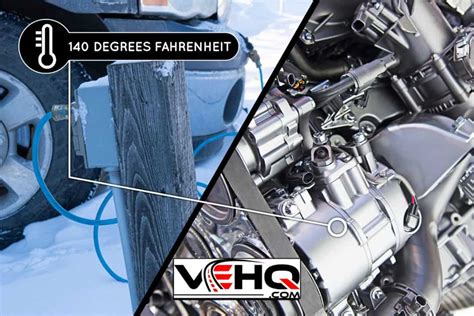How Hot Does Block Heater Get
Ronan Farrow
Apr 04, 2025 · 2 min read

Table of Contents
How Hot Does a Block Heater Get? A Comprehensive Guide
Knowing how hot your block heater gets is crucial for understanding its effectiveness and ensuring safe operation. This comprehensive guide will delve into the temperature specifics, factors influencing heat output, and safety considerations.
Understanding Block Heater Functionality
A block heater is an electric resistance heater designed to warm your engine block before starting. This pre-heating significantly improves cold-weather starting, reduces wear and tear on your engine, and helps to extend its lifespan. They operate by plugging into a standard 110-120V electrical outlet.
How Hot Does a Block Heater Typically Get?
The temperature a block heater reaches isn't a fixed number, as it depends on several factors. However, a typical operating temperature for a block heater sits between 120°F (49°C) and 180°F (82°C). This isn't the temperature of the coolant throughout the entire system, but rather the temperature immediately surrounding the heating element within the engine block. The coolant temperature will gradually increase as the engine block warms up.
Factors Affecting Block Heater Temperature
Several factors influence the actual temperature your block heater achieves:
1. Ambient Temperature: Colder ambient temperatures will allow the block heater to reach its maximum temperature more quickly. In warmer conditions, the rate of heat transfer will be slower, resulting in a lower overall temperature.
2. Heater Wattage: Block heaters come in varying wattages. Higher wattage heaters generally produce more heat, resulting in higher temperatures within the engine block.
3. Engine Block Material and Size: Different engine block materials and sizes affect how quickly and efficiently the heat dissipates. Larger engine blocks will take longer to warm up.
4. Coolant Level: A low coolant level will reduce the volume of fluid heated, potentially leading to a slightly higher temperature reading close to the heating element itself, though the overall impact on engine warming may be negative.
5. Time Plugged In: The longer your block heater is plugged in, the warmer your engine block will become. However, prolonged heating beyond what's necessary is energy inefficient.
Safety Precautions
While block heaters are generally safe, always follow these precautions:
- Never leave a block heater unattended while plugged in.
- Ensure the cord is undamaged and properly insulated.
- Don't overload the electrical outlet.
- Avoid touching the heater while it's operating. The area immediately around the element itself will be hot to the touch. Always allow sufficient time for the unit to cool down before handling.
- Consult your vehicle's owner's manual for specific recommendations and warnings.
Conclusion
Understanding the factors influencing a block heater's temperature will help you optimize its effectiveness and ensure your vehicle is ready for cold-weather starts. Remember safety is paramount; always follow manufacturer guidelines and use caution when operating your block heater. By understanding how these heaters work, you can ensure a smoother, safer, and more efficient start to your day, even in the harshest winter conditions.
Featured Posts
Also read the following articles
| Article Title | Date |
|---|---|
| How Far Can I Move With Joint Custody | Apr 04, 2025 |
| How Do Title Loans Work In Az | Apr 04, 2025 |
| How Did Christine Rosamond Die | Apr 04, 2025 |
| How Does A Generator Work Without Electricity | Apr 04, 2025 |
| How Do You Finish Teak Wood | Apr 04, 2025 |
Latest Posts
Thank you for visiting our website which covers about How Hot Does Block Heater Get . We hope the information provided has been useful to you. Feel free to contact us if you have any questions or need further assistance. See you next time and don't miss to bookmark.
